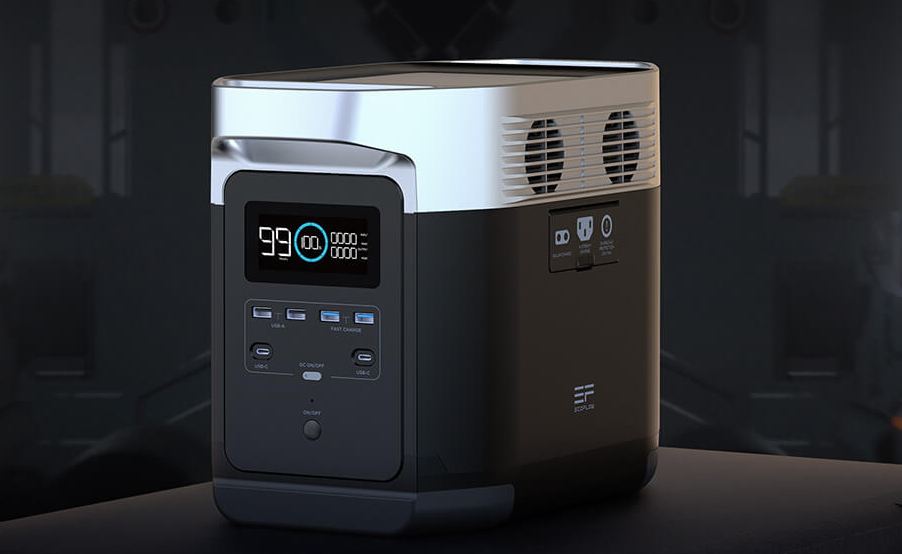The EcoFlow Delta 1300 is one of the best mid-size solar generators in the market. It’s also one of the most versatile - you can use it for home backup, to power appliances in your RV, for camping and so on.
One of the reasons it’s so versatile is that you can charge it in different ways depending on your situation.
Whether you are at home, outdoors camping, or traveling on the road, there’s always a way to keep your Delta 1300 power station charged.
In this post, we look at the different ways you can charge the EcoFlow Delta 1300. But first, a quick summary in case you are not familiar with this solar generator.
EcoFlow Delta 1300: Quick Overview
I’ve already written a full in-depth review of the EcoFlow Delta 1300. So I’ll just quickly summarize its best features.
The Delta 1300 comes with a 1260Wh li-ion battery. The integrated AC inverter has a continuous output of 1800W (3300W surge), meaning it can power most household appliances.
You can plug in appliances into one of the six AC outlets. You can charge devices in one of the six USB ports (4 USB-A and 2 60W USB-C). There’s also a 12V car outlet for DC powered tools and electronics.
The Delta 1300 weighs 30.9lbs. While it’s not exactly ultra lightweight, it’s portable enough to carry with you when on the road.
Three Ways To Charge The EcoFlow Delta 1300
Like most solar generators, the EcoFlow Delta 1300 has three recharge options. You can charge it from a standard wall outlet, using solar panels or from your vehicle’s 12V/24V outlet.
Let’s discuss all options in detail including how long it takes for each to charge the Delta 1300.
1. AC Charging
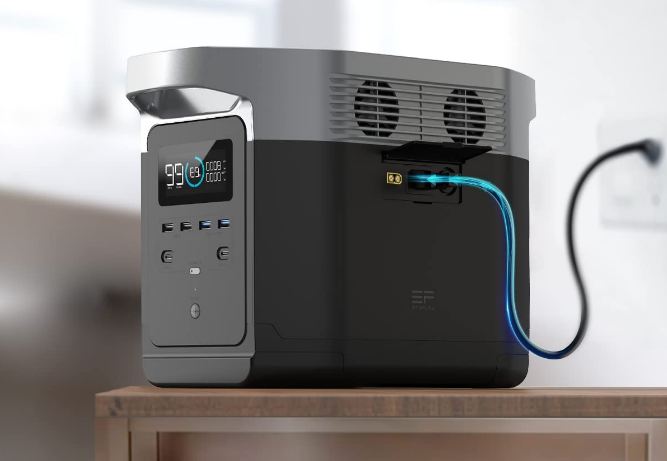
Typically, the fastest and most convenient way to charge solar generators is from a wall outlet. The EcoFlow Delta 1300 is no different.
What’s different about the EcoFlow Delta is how fast it charges with AC. Most power stations with a similar capacity take a few hours to recharge from an outlet.
The EcoFlow Delta charges from 0 to 80% in just 1 hour and fully recharges in 1hr and 36 minutes.
This is thanks to EcoFlow’s X-Stream charging technology that’s available in most of their power stations from the small EcoFlow River Mini to the massive EcoFlow Delta Pro.
The AC charger that comes with the power station has an input capability of up to 1200W, far more than what most chargers can achieve.
To charge the Delta 1300 from an outlet, just plug in the included charger into the power station’s input port and the other end into the wall outlet.
Check the display screen to confirm that the solar generator is charging.
2. Solar Charging
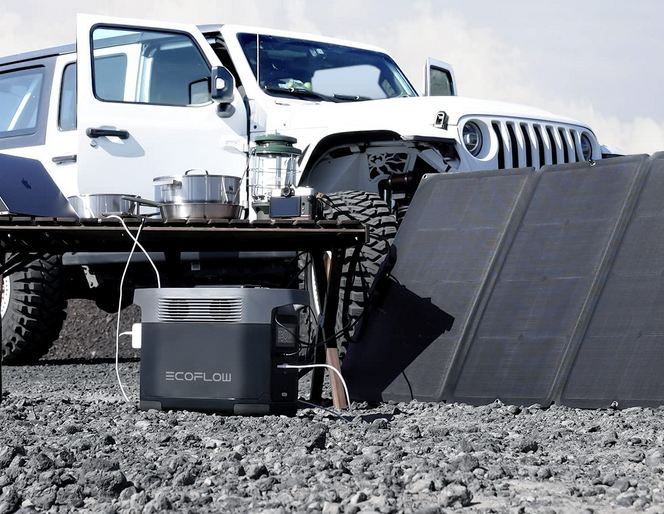
The EcoFlow Delta 1300 doesn't come with solar panels. You have to buy them separately if you want to charge the power station with solar.
The Delta 1300 accepts max solar input of 400W. On a good sunny day, you can recharge the Delta 1300 from a 400W array in about 4.5 hours. That's a pretty good time when it comes to solar charging.
EcoFlow sells their own solar panels, including a large 400W foldable module. But you can use any third party solar panels as long as the total system voltage is between 10V and 65V and total output doesn't exceed 400W.
So even a single 12V, 100W panel will charge the Delta 1300. But if you want fast solar charging, get enough panels to generate 400W of power.
You can wire solar panels in series or parallel. But keep in mind that wiring in series adds up voltages, so you can only connect a max of three 12V panels to avoid going over the 65V limit (open circuit voltage of 12V solar panels is around 20V),
The Delta 1300 already comes with an MC4 to XT60 solar charging cable, so you don't need any other special cable or adapter for series-connected solar panels.
If you opt to connect your solar panels in parallel, you’ll need parallel branch connectors.
If the solar panels are far away from the power station, EcoFlow sells a 9.8ft extension cable. You can also use any MC4 solar extension cable from a reputable brand.
Once you connect the solar panels, check the display screen to confirm that you have power coming in.
3. Car Charging
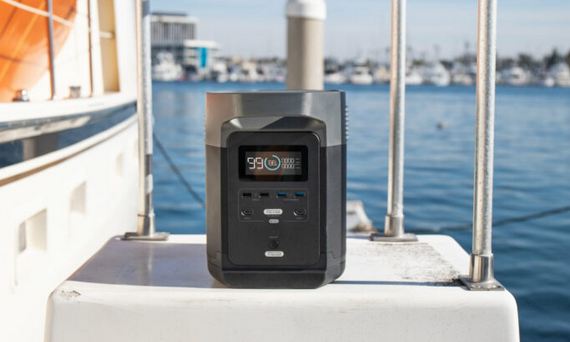
The final option to charge the EcoFlow Delta 1300 is from your vehicle’s 12V/24V socket. EcoFlow includes a car charging cable along with the power station.
Car charging is the slowest method. It takes about 10.5 hours to fully recharge the Delta 1300 from your car.
This is why I often recommend using car charging mostly to top up your portable solar generator. If you’ll be driving for some time, you might as well charge the solar generator at the same time.
Does The EcoFlow Delta 1300 Have Dual AC & Solar Charging?
The Delta 1300 doesn't have dual charging. You cannot charge it with AC and solar at the same time.
Connecting solar panels and the AC charger simultaneously will not damage the power station, but it won’t charge it any quicker.
This is what EcoFlow says on their website regarding simultaneous AC and DC charging: DELTA will prioritize AC charging, and default to DC charging when AC charging is not used.
If you want dual charging get the bigger Delta Max or Delta Pro power stations. Bluetti also offers dual charging (dual AC and dual AC/DC) in some of their solar generators.
How Long Does The EcoFlow Delta 1300 Take To Recharge?
When charging from a wall outlet, the Delta 1300 takes 1.6hrs or 96 minutes to recharge (1hr to reach 80%).
When charging with 400W solar input, it takes roughly 4.5 hours to recharge the Delta 1300. This is assuming there’s strong sunshine. In unreliable weather conditions, it can take anywhere between 4-8 hours.
When charging from your car’s 12V/24V outlet, it’ll take about 10.5 hours to recharge the Delta 1300.
Can I Charge The Delta 1300 Using the EcoFlow Smart Generator?
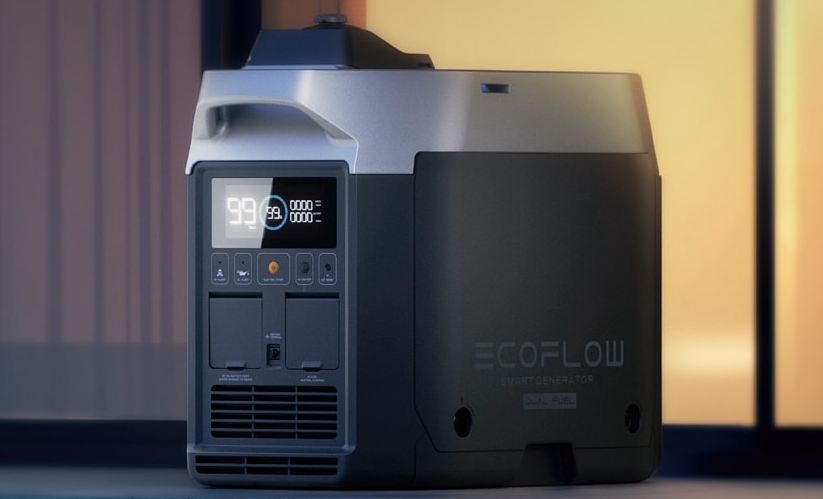
Unfortunately, you cannot use the EcoFlow gas/propane generator to recharge the Delta 1300. The EcoFlow smart generator is compatible only with the Delta Max and Delta Pro power stations.
However, you can recharge the Delta 1300 from any gas generator that produces at least 1500W of 220-240V AC power.Can I Use The Delta 1300 While It’s Charging?
Yes, the Delta 1300 supports pass-through charging. Don’t use it too often though as the extra heat generated is bad for battery lifespan.
Also, if the battery is too low, wait for it to recharge a bit before you plug in anything.
Can I Leave The Delta 1300 Plugged In?
It is generally safe to leave the Delta 1300 plugged in for short periods. For example, you can go to sleep and leave it charging overnight.
The battery management system ensures the power station doesn't overcharge. You can then unplug it in the morning.
However, if you don't plan to use the Delta 1300 for some time, do not leave it plugged in. It will reduce battery lifespan.
Instead, unplug the battery and store it in a cool dry place. Recharge the battery every three months to keep it from fully discharging on its own, which is also bad for the li-ion battery.
How Long Does The EcoFlow Delta Battery Last?
The EcoFlow Delta 1300 has a li-ion battery. These types of lithium batteries have a cycle life of 500 to 800 cycles to 80% capacity.
In other words, you can charge and discharge the battery 500-800 times before battery capacity degrades to 80%.
According to EcoFlow, the Delta 1300 has a cycle life of 500 cycles, which translates to about 2-3 years of normal use.
That’s not to mean the solar generator will be useless after that. It’ll have less capacity but you’ll still be able to use it for a few more years.
Lithium-ion solar generators have an average total lifespan of 3-5 years depending on how often you charge it.
If you want a power station that lasts longer, get one with a lithium phosphate (LiFePO4) battery like the EcoFlow Delta 2, Bluetti AC200MAX and EcoFlow Delta Pro.
LiFePO4 batteries have a cycle life of 3000+ cycles to 80% capacity, and can last up to 10 years.

